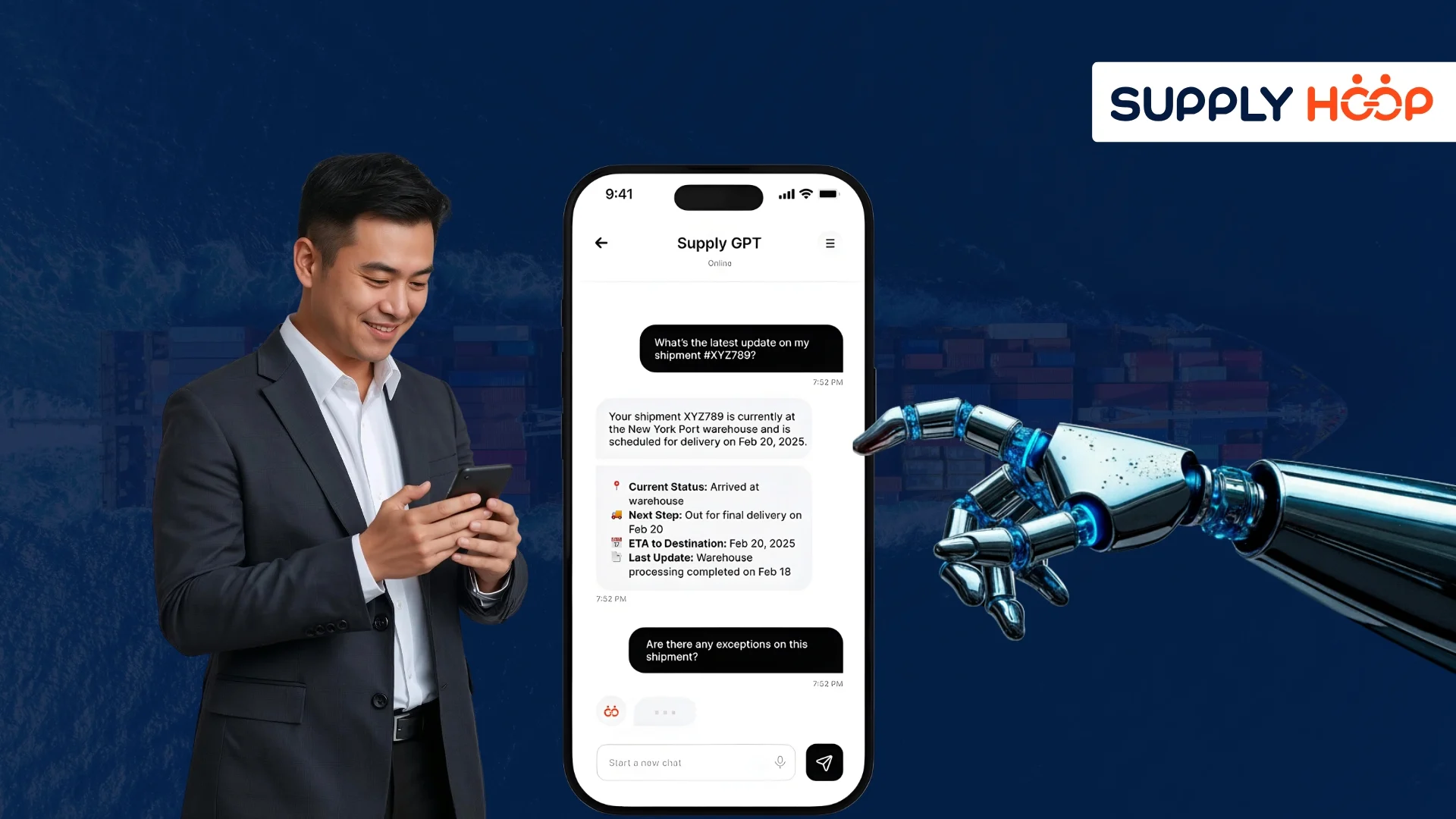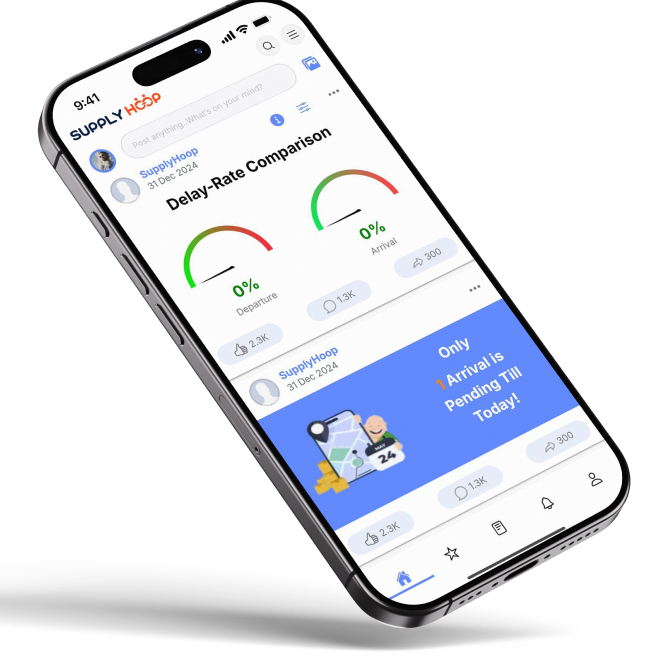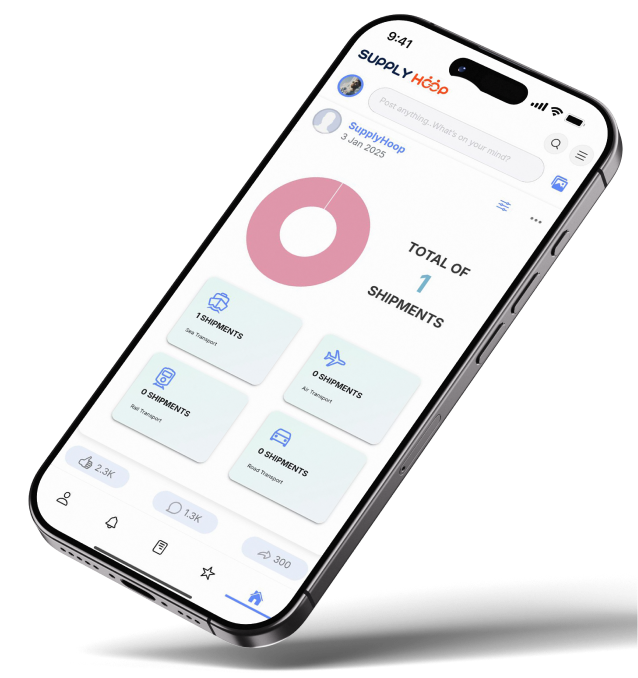“Those who are unable to remember the past are condemned to repeat it.” This well-known phrase by philosopher George Santayana is more applicable to supply chain management than ever.
In a world where logistics relies on precision, efficiency, and dependability, failure to learn from past mistakes can result in constant disruptions, wasted costs, and lost opportunities.
Many businesses rely only on real-time tracking, which is critical, but what about past data? If you don’t analyze prior supplier and carrier performance, you’re operating your supply chain based on imagining. Businesses repeat the same mistakes without a detailed record of delays, inefficiencies, and patterns in delivery performance. This causes poor supplier selection, missed deadlines, excessive costs, and operational inefficiencies that could have been easily avoided with the right insights.
Historical information access is more than simply a database of prior shipments; it’s an intelligence tool that assists firms in making informed decisions and improving supply chain visibility. Businesses can optimize their supply chain operations, lower risks, and boost efficiency by analyzing logistics trends, carrier performance, and supplier dependability using Supply Hoop’s mobile application.
The Hidden Costs of Ignoring Historical Data
Many businesses are trapped in a loop of reactive decision-making. When a shipment is delayed, they look for options. When a supplier misses a deadline, they give it another go. When freight costs rise, people believe it is due to market factors. The truth is that these challenges are frequently predictable if only businesses took the time to study their previous data.
Businesses that fail to track previous supplier and carrier performance continue to rely on poor vendors, pay greater rates for unreliable services, and face unnecessary supply chain disruptions. Consider this, if a supplier has missed many delivery deadlines in the last year, isn’t it time to rethink your partnership? If a specific carrier repeatedly charges increased fees while failing to satisfy transit time commitments, why continue using them?
Businesses suffer from poor demand forecasting because they lack previous data insights. Inventory planning becomes an impossible task, resulting in stockouts or overstocking, both of which reduce profitability. Companies that fail to study previous shipping trends frequently make last-minute decisions, resulting in increased shipping expenses, problems with supply chains, and inventory mismanagement.
How Historical Data Enhances Supply Chain Visibility
Access to past performance data enables firms to monitor trends, compare vendors, and make data-driven decisions. Companies using Supply Hoop’s supply chain visibility platform can combine insights from numerous freight forwarders, carriers, and suppliers to build a comprehensive picture of their logistics operations. This implies that businesses no longer have to rely on divided, qualitative information, they can see hard statistics about who delivers on time, who causes delays, and where inefficiencies are present.
Tracking supplier performance is among the most effective uses of past data. To assess if a supplier is a reliable partner or a persistent issue, businesses might look at factors including response times, on-time delivery rates, and issue resolution effectiveness. This data is particularly useful in contract negotiations, allowing businesses to use previous performance insights to achieve higher pricing and service assurances.
Similarly, historical data allows for carrier performance review. Businesses may evaluate freight costs, transit times, and service reliability across multiple carriers to ensure they select the best partners for their shipping requirements. Companies may now optimize their logistics network using cold, hard data rather than decisions based on relationships or convenience.
Beyond vendor performance, historical data improves demand forecasts and inventory planning. Businesses can predict demand swings and alter procurement methods based on seasonal trends, prior order volumes, and supply chain interruptions. This avoids costly rush orders, stock shortages, and unneeded warehousing costs.
Why Historical Data is a Must-Have for Supply Chain Resilience
Supply chain resilience is more important than ever in the unpredictable logistics environment of today. With persistent issues such as port congestion, shifting freight prices, and geopolitical upheavals, organizations that fail to examine past data are vulnerable to supply chain shocks. Companies that use previous performance data, on the other hand, may construct stronger, more adaptive supply chains that can endure disruptions with fewer consequences.
For example, if a corporation notices that specific trade routes are delayed every year during high shipping seasons, it can proactively adapt its logistics plan to avoid obstacles. Businesses can limit risks by diversifying suppliers or increasing safety stock if a supplier has a history of late delivery at key times of the year.
Businesses can avoid issues before they arise by using historical data, not merely to respond to them. Businesses that practice this kind of proactive supply chain management stand out and get a competitive edge in an unpredictable marketplace.
Turning Data into Action with Supply Hoop
At Supply Hoop, we help businesses gain the historical insights they need to turn supply chain visibility into a strategic advantage. Our mobile application combines supplier and carrier performance data, shipping trends, and operational KPIs into a simple platform. Logistics managers can now confidently track, compare, and optimize supply chain decisions.
Businesses can use Supply Hoop’s Historical Information Access to:
- Identify and eliminate underperforming suppliers and carriers.
- Negotiate better freight rates and service-level agreements.
- Enhance demand forecasting for smarter inventory planning.
- Prevent supply chain disruptions before they occur.
- Streamline operations by consolidating logistics data across multiple vendors.
Conclusion
History is one of the best teachers in supply chain management. Companies that take the time to study prior performance, trends, and disruptions make better decisions, save money, and increase efficiency.
Businesses can finally stop depending on intuition and incomplete information by using Supply Hoop’s mobile application. Instead, they acquire full supply chain visibility, guaranteeing that accurate data supports every choice, that every supplier is held responsible, and that every shipment is optimized for optimal efficiency.
Avoid repeating supply chain errors by using past data to make more intelligent choices. Get in touch with us right now to see how Supply Hoop’s real-time visibility may revolutionize your supply chain strategy!





